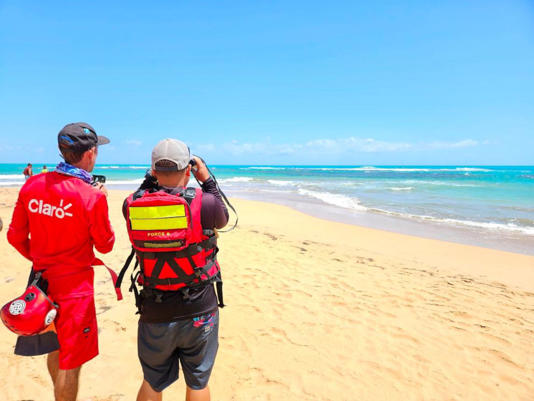The allure of Puerto Rico’s beautiful beaches draws visitors from around the world, but recent incidents serve as sobering reminders of the dangers that can lurk in the surf. In this article, we delve into the search efforts for a missing U.S. Marine off the coast of Puerto Rico and explore the broader implications for beach safety. By examining the factors contributing to beach drownings and highlighting essential safety measures, we aim to educate beachgoers and promote awareness of potential risks.
The Search for the Missing Marine: The disappearance of Samuel Wanjiru, a 26-year-old U.S. Marine, while swimming at La Pared beach in Luquillo has prompted a large-scale search operation involving the U.S. Coast Guard and local authorities. Despite extensive search efforts utilizing divers, boats, jet skis, helicopters, and drones, Wanjiru remains missing, underscoring the challenges of maritime search and rescue operations in rough sea conditions.
Risk Factors and Safety Warnings: Wanjiru’s disappearance occurred during a high surf advisory, highlighting the dangers posed by strong currents and rip tides along Puerto Rico’s coastline. The Puerto Rico Emergency Management Bureau issued warnings about life-threatening rip currents, urging beachgoers and boaters to exercise caution. Captain Jose E. Díaz of the U.S. Coast Guard emphasized the seriousness of the situation, advising visitors to heed weather warnings and avoid entering the water until conditions improve.
Lessons Learned and Preventive Measures: The tragic incidents in Puerto Rico serve as stark reminders of the importance of beach safety and preparedness. While enjoying the beach can be a rewarding experience, it is essential to prioritize safety and take proactive measures to mitigate risks. Some key preventive measures include:
- Heeding Weather Forecasts: Stay informed about weather conditions and heed warnings issued by the National Weather Service regarding high surf advisories, rip currents, and other hazards.
- Swimming Near Lifeguarded Areas: Whenever possible, swim at beaches with designated lifeguard stations, where trained professionals can provide assistance in case of emergencies.
- Avoiding Risky Behavior: Refrain from swimming alone or venturing into the water during adverse weather conditions, such as high surf or strong currents. Be cautious when swimming in unfamiliar or unguarded areas.
- Using Personal Flotation Devices: Wear a Coast Guard-approved life jacket when engaging in water activities, especially if you are not a strong swimmer or are unfamiliar with local conditions.
- Practicing Water Safety Awareness: Educate yourself and your companions about water safety principles, including how to identify rip currents, how to escape if caught in a rip current, and the importance of swimming parallel to the shore.
The search for Samuel Wanjiru and the tragic drowning incidents off the coast of Puerto Rico underscore the importance of beach safety and vigilance. By understanding the risks associated with ocean swimming and adopting preventive measures, beachgoers can minimize the likelihood of accidents and ensure a safe and enjoyable experience by the shore. As we continue to enjoy Puerto Rico’s stunning beaches, let us prioritize safety and responsibility to protect ourselves and our loved ones from harm.
